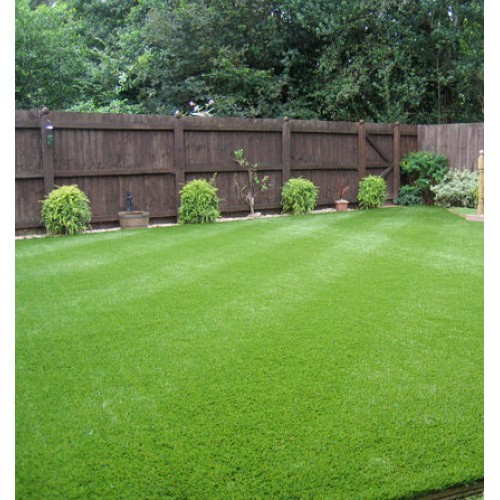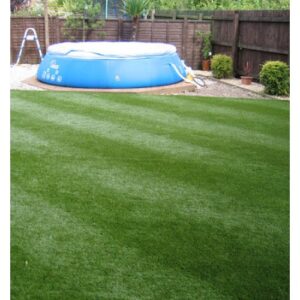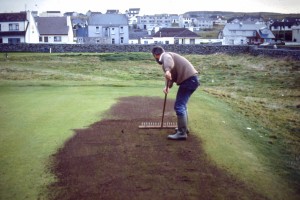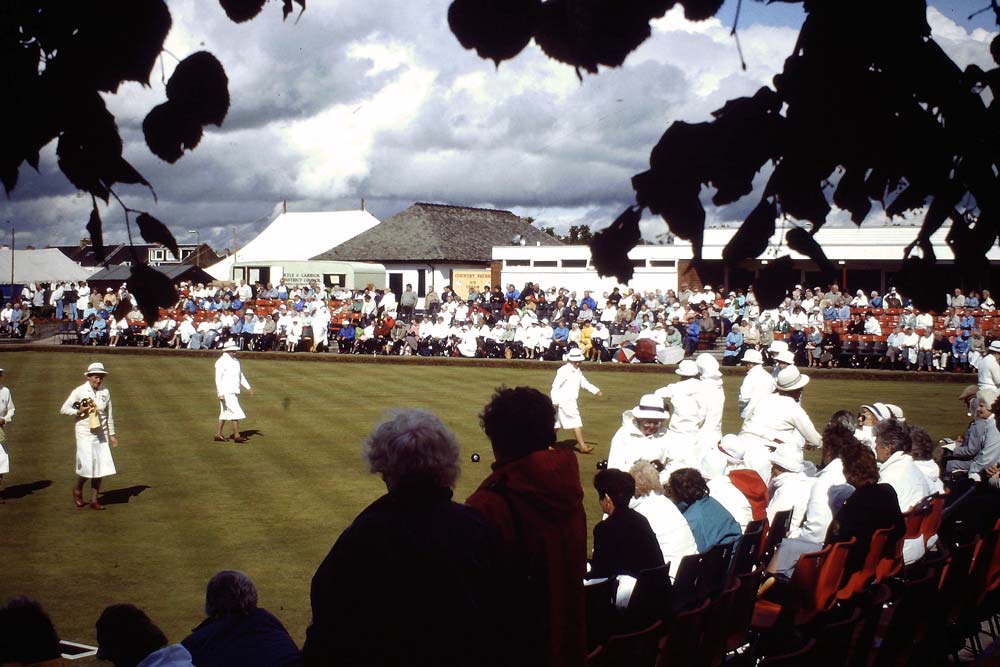
Annual Lawn Care Schedule: Grass Maintenance Through the Year
This article is a quick reference guide to the tasks required throughout the year to keep your lawn in good condition.
The guide will equally apply to all lawns, whether newly constructed or old established turf, and should be seen as a general outline of the tasks and materials required. All of these are covered in detail elsewhere on our site.

You’ll want to create your own bespoke lawn care schedule depending on location and conditions, but this will provide you a great start.
Controlling Moss in Your Lawn
The very wet weather over the past few years has led to a huge explosion in the moss population as moss just loves damp conditions and will thrive when the grass is growing very slowly over the Winter months.
Moss is best controlled in turf by applying iron. There are a lot of different forms of iron which can be used, but over the colder Winter months sulphate of iron is the most effective. November and February are ideal for applying dressings of iron sulphate at 15 grammes per sq metre to knock back the moss before the onset of Spring, as this allows the grass to fill in the resultant gaps very quickly when the ground warms up.
This is easiest to apply dissolved in water, then applied with a knapsack or watering can. If applying dry, best to mix with dry sand at a ratio of 4 to 1 sand/iron, as that makes it much easier to get a good even coverage. So 60 gram sand, 15 gram iron, per square meter. Get iron/sand here. Note here, if buying a ready made lawn sand, you would need to double the recommended application rate to get the same effect.
A word of caution, do not scarify to remove the moss at this stage as exposing the grass crowns to frost or cold winds can damage or even kill the grass.
It is very important to be ready for the first signs of spring as this is when, with the proper treatment, we can ensure a healthy lawn for the rest of the growing season.
Spring-time Lawn Care
Around the middle of March is the ideal time to aerate the lawn by spiking with a motorised spiker fitted with slit or knife blades, or by hand forking, then run the lawnmower over it to restore any disturbed areas.
As soon as the warmer spell of weather occurs, often late march to early April in the north, but earlier in the south of the UK, apply a Spring fertiliser consisting of nitrogen to promote growth, and iron to finish off the moss. This is best applied as a granular product with an analysis of 8 to 12-0-0+ 8% to 12% iron( on the label as fe). Find this on our lawnsforyou online shop.
Around a week after the fertiliser application the moss will be blackened and killed ready for removal. On a small lawn this is easily achieved by using a spring tine rake, but on larger lawns a powered scarifier will be required. When the moss is removed use the mower to remove any remaining debris.
The Winter cutting height of 25mil can be gradually lowered to the preferred summer height, usually between 15 and 20mil over the period from early April till the end of May, ensuring it is done regularly.
Caring For Your Lawn in the Summer
Mow regularly and remove the cuttings if possible, except in drought, as this gives a much better quality surface. Try to cut at least once per week.

I prefer using a liquid fertiliser for the two Summer applications. Ideally a seaweed liquid with 8% nitrogen and a little chelated iron applied around the end of May, then again around the end of July. Get here. Or check out our own online shop.
If weeds are a problem the time to apply a selective weedkiller,is early June, about a week after the late May fertiliser application to unsure the grass is strong enough to quickly fill in the gaps left by the dying weeds. Get here. I do not like weed and feed mixes as they can cause a lot of damage to the lawn if not applied properly, or in the right weather conditions.
Autumn Lawn Care Tasks
The Autumn is the best time to aerate the lawn. Deep forking or spiking should be followed by an application of good quality sand at one to two kilos per square meter.Follow this with an application of Autumn fertiliser to keep the grass ticking over nicely throughout the colder months. Get here.
If the soil is a heavy loam or clay then I would advise a dressing of seaweed meal before the sand as this helps to improve the soil structure. Seaweed meal is also great for vegetable and flower growing. Finally, apply a granular Autumn feed of around 4-0-6 + 4% iron. Get all of these here.
Winter Lawn Care
Raise the height of cut to your preferred Winter height and be prepared to keep the lawn trimmed throughout the Autumn and Winter during any mild spells as this keeps the surface much drier and healthier.
The moss can be kept under control by applying sulphate of iron twice over the Winter, aiming for around November, then mid February, as in the first paragraph.
If you follow the above guide you should be able to produce a good quality lawn on anything but the worst ground conditions



Our aerating is starting to pick up big time. That fall weather is starting to set in up here in Bend, OR and people are starting to remember all the care their lawns need!
Great article on annual lawn maintenance. I own a lawn care company in Georgia and I enjoy reading what others have to share about lawn care. Thanks!
My lawn service applied an organic granular fertilizer and crab grass controller to my lawn on 3/1/19. We got 2 inches of snow 3/3 and the temp has dropped to 10-15 degrees. My note from them says they will be back in 6 weeks to again apply fertilizer. My question is will the application made on 3/1 be effective due to the snow and drop in temp?
Hi Annette, I have to say I do not have any experience of your area, but I would guess that as the fertiliser was applied two months before the snow, it would have the time to work OK. Around the end of March would sound about right for the Spring application of fertiliser. I hope this helps you. Please get back to me with anything else. Duncan.